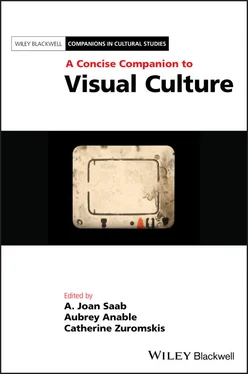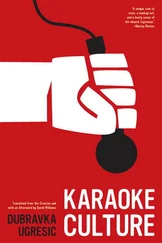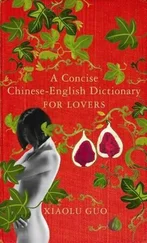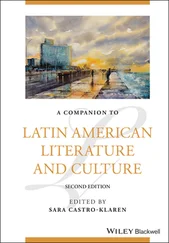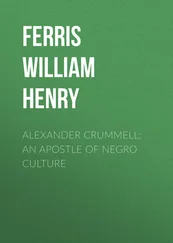JONAnd Steward’s circle was Gertrude Stein, Alice B. Toklas, George Platt Lynes—and his being willing to talk about homosexual desire and rough sex gave them an outlet they wouldn’t otherwise have had for talking about those things in more rarefied circles. Having a figure like him allowed those conversations to happen, and who knows how much that fuelled their “high art.”
*
RICHARDI think there are things that register in the visual that don’t register anywhere else, or at least don’t register as powerfully or as vividly or, let’s say, libidinally. What art history gives us is a way of looking critically and closely at visual objects. We look not only to learn about form but to understand the relation between visual form and lived experience. I was lucky in that I was trained in college by feminist art historians. I knew that the skills that art history offered were relevant not only to canonical art but also to the exclusions it imposed and to the social world, more broadly conceived of. Feminist art history showed me how to take my high art training into other domains of the culture.
JONThis brings us back to the tension between, say, a sexual experience and its representation or impossibility thereof. I think that central to art history, or at least to art history how we do it here at Stanford, is acknowledging that what we do as scholars and writers—and what we can do with the craft of writing—can never fully capture the visual image, and that there is always a tension between the image or artwork we are discussing and what we are able to do through language and description to actually articulate it. So I think that’s another way art history makes itself available to that question of representability or legibility that seems very queer.
RICHARD I’ve always been drawn to things that appear to be irreconcilable, and part of the logic of queerness concerns that. Including, I would say, elite artistic visual culture and gay subcultural images, for example David Hockney and his relation to the physique photography of Bob Mizer, which partially inspired Hockney to move to Los Angeles and is featured, in reimagined form, in several of his paintings.
I’ve sometimes thought, if I couldn’t have written about Physique Pictorial (Mizer’s magazine) or about the mural painted by Chuck Arnett at the Tool Box (an early 1960s leather bar in San Francisco at which Arnett tended bar), I wouldn’t have become an art historian—not because I was trying to make physique photography or bar murals into museum art but because I don’t believe that high art can (or should) be severed from other forms of cultural production and creative labor.
JONI feel like I share that same lack of interest in high art as a category; I never really held it up as a transcendent, aspirational category. I think that, for myself, it was always how a work of art was tied to social and erotic energies. Something I was thinking about was the way, say, erotic gay drawings circulated secretly and privately among men when this was illegal. I wonder how much the form and the aesthetics of those drawings really matter, by comparison to the intense social, emotional, psychic, and affective energies that are invested in them; and I wonder how art history can grapple with these things, once the people who had such intense relationships with those objects are gone. I guess it’s up to the writing to be able to re‐create such intense attachments in the absence of those who experienced them, though it’s a very tricky business.
RICHARDI think that’s really important and something I couldn’t quite comprehend early on when doing work on American art, homosexuality, and censorship: the ways in which meanings—the charge, the power that works have—cannot be attributed only to their visual or formal achievement but actually to what they spark in the moment of their making—and also in subsequent moments, when viewers may experience the work in ways that couldn’t have been predicted by the artist. Queerness in this sense might be thought of a practice of looking against the grain, against the overall logic or intention of a film, artwork, or printed text by attending to moments, however fleeting, that spark other possibilities.
*
RICHARDSo what is now called “queer studies” (what in the late 1980s was called “gay and lesbian studies”), and cultural studies, and visual studies or visual culture—all these emerged in my intellectual consciousness more or less simultaneously. I was an art history major, I already had art history implanted in me, and I was out as a gay man; I wanted to bring art and sex together somehow. But I think there is a special rapport between queer studies and visual studies—both fields require that we look at things that we’ve been told in the past we shouldn’t be looking at. Part of the argument that Catherine Lord and I made in Art and Queer Culture (Meyer and Lord 2013) is that you can’t chart the dialogue between those two categories if you just look at museum and gallery art. Queer culture is also a culture of everyday life, it’s a history of underground imagery, of anonymous things, of activist things, of scrapbooks. That’s where visual studies seemed so liberating to me—not only was it acknowledging that there are all these things that are left out, but it was also making me look at the relation between writing and images, and work through the discrepancy between those forms of communication. The theoretical grounding of visual studies in its emergent days (and here I’m thinking especially of Foucault and Barthes) allowed people to think differently about the relation between writing and looking, or writing and objects.
JONI think it’s really important that queer studies—or just queer people—are, basically, attuned to reading between the lines and understanding that not all the meaning of an image resides on the surface, that it’s something to be decoded. I feel like that’s another point of coming together between queer studies, visual studies, and art history. And I wonder, as queer artistic production happens now, in 2019, whether there’s still a sense of being in opposition to a dominant culture, or of having to speak in code or to work with irony or camp or these other historically queer reading strategies. I imagine that queer art will change a lot as a generation comes up that doesn’t necessarily think of itself as being outside, or abjected, or hated by mainstream society. So I wonder what it means to lose that ability to speak in code or to read code in the future, and how we may keep it alive in some way.
RICHARDThere’s this beautiful passage in Eve Kosofsky Sedgwick’s writing where she questions why it is that she has always been so interested in the closeting of homosexuality in literature, Victorian literature more specifically, and not in later, full‐bodied affirmations of gay and lesbian identity. For Sedgwick, it was more interesting to think about layered and encoded meanings in nineteenth‐ and early twentieth‐century fiction than, let’s say, in post‐Stonewall gay literature. After reading that passage, I realized that I actually found (and still find) the visual and rhetorical devices of censorship compelling: erasure, partial obstruction of vision, the bar across the genitals, or the posing strap or G‐string worn by one of Mizer’s physique models. I’ve always been drawn, queerly I think, to visual images that have to struggle to be seen and to images that are structured by partial invisibility or necessary encoding.
JONI was thinking, again, about the Internet and the digital and how, in your recent “Fifty and Counting” article for Art in America , you quote the artist Zoe Leonard and you write that “powerful forces of desire were clarified by encounters with particular writings and films” (Meyer 2019, 84). I have this tendency to think that encountering, say, a queer historical image on Instagram or something like that is a degraded or less “authentic” way of encountering it, because there’s a kind of flattening in terms of scale and texture and context, but what you just said is making me think that maybe these digital platforms are more about a space of contestation or conflict. People assume that they have a high degree of freedom when it comes to expressing themselves and their identities, but then to have Instagram censor an image is a powerful reminder that representation is still contested. Just considering how the digital changes visual culture and how it’s consumed so thoroughly, I’m wondering what you think of these platforms, especially since, as art historians, we are very attuned to the object, and here the things we are dealing with aren’t really objects anymore.
Читать дальше
